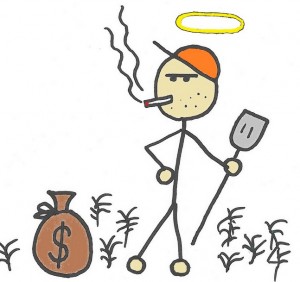Cigarettes are not good for your health, but what happens when governments try to make the point but taxing products they disapprove?
Tobacco consumption in America has declined consistently since the surgeon general’s office published its first report in 1965. However, more than 18% of adults still identified as smokers in 2013, and in many states, demand for tobacco is high enough to justify large-scale smuggling operations. In New York, a nation-leading 58% of the cigarette market was smuggled in 2013. The share is so high that it hardly fits the description of an underground market.
Cigarette taxes vary greatly between states, and therefore, so do cigarette prices. According to the recent Tax Foundation report, “Cigarette Taxes and Cigarette Smuggling by State, 2013,” this creates arbitrage opportunities for smugglers — that is, the profiting from asset price differences. For our purposes, cigarette smuggling is defined broadly as an avoidance of cigarette taxes.
A state’s cigarette tax is the largest contributor to the smuggling rate. The tax rate on cigarettes in all but two of the nine states where smuggling is most common exceeded the national average rate of $1.44 per pack. In New York, the tax rate is $4.35 per pack, the highest in the nation. Neighboring Vermont, Pennsylvania, as well as nearby New Hampshire, all had much lower tax rates, as well as net outflows of contraband tobacco.
In states that have much higher taxes than other states, and not very much separation geographically, the likelihood of smuggling increases dramatically.
In addition to the high tax rate variance between states, there is the added opportunity for smugglers to buy cigarettes in Indian reservations where tobacco is often far less expensive. New York, New Mexico, Arizona, Wisconsin, and Washington are all near Indian reservations that likely influence the smuggling rate considerably.
While smuggling cigarettes was extremely lucrative for many smugglers, large-scale or small, smoking cigarettes was relatively uncommon in all of these states. The percentage of adults who identified as smokers in 2013 exceeded the national smoking rate of 18.2% in only two of the nine states reviewed.
Levying such so-called “sin taxes” is extremely problematic. Long term planning is almost impossible. For the Tax Foundation, a positive percentage is a measure of inflow, while a negative percentage indicates an outflow of smuggled cigarettes. Tax rates, smuggling rates from 2006, and percentage point change data also came from the Tax Foundation. Local tax rates, state and local tax revenue figures, and tax burdens are from the Tax Policy Center and are as of the most recent period available. The percent of adults who smoked in 2013 is from the Kaiser Foundation. Rainy-day funds, or reserves as a percentage of general fund expenditures in fiscal year 2014 were provided by Pew Charitable Trusts.

